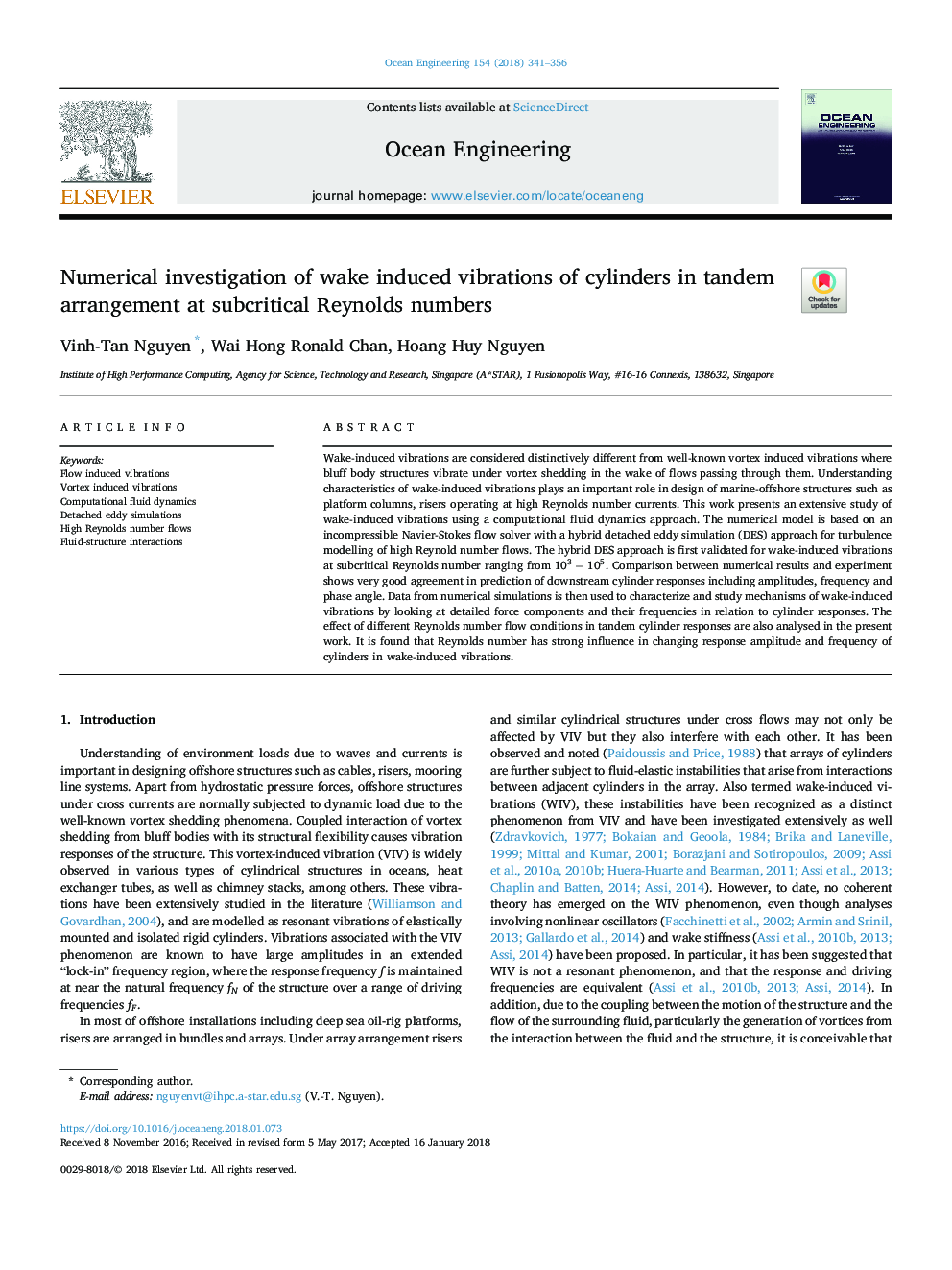| Article ID | Journal | Published Year | Pages | File Type |
|---|---|---|---|---|
| 8063068 | Ocean Engineering | 2018 | 16 Pages |
Abstract
Wake-induced vibrations are considered distinctively different from well-known vortex induced vibrations where bluff body structures vibrate under vortex shedding in the wake of flows passing through them. Understanding characteristics of wake-induced vibrations plays an important role in design of marine-offshore structures such as platform columns, risers operating at high Reynolds number currents. This work presents an extensive study of wake-induced vibrations using a computational fluid dynamics approach. The numerical model is based on an incompressible Navier-Stokes flow solver with a hybrid detached eddy simulation (DES) approach for turbulence modelling of high Reynold number flows. The hybrid DES approach is first validated for wake-induced vibrations at subcritical Reynolds number ranging from 103â105. Comparison between numerical results and experiment shows very good agreement in prediction of downstream cylinder responses including amplitudes, frequency and phase angle. Data from numerical simulations is then used to characterize and study mechanisms of wake-induced vibrations by looking at detailed force components and their frequencies in relation to cylinder responses. The effect of different Reynolds number flow conditions in tandem cylinder responses are also analysed in the present work. It is found that Reynolds number has strong influence in changing response amplitude and frequency of cylinders in wake-induced vibrations.
Keywords
Related Topics
Physical Sciences and Engineering
Engineering
Ocean Engineering
Authors
Vinh-Tan Nguyen, Wai Hong Ronald Chan, Hoang Huy Nguyen,
